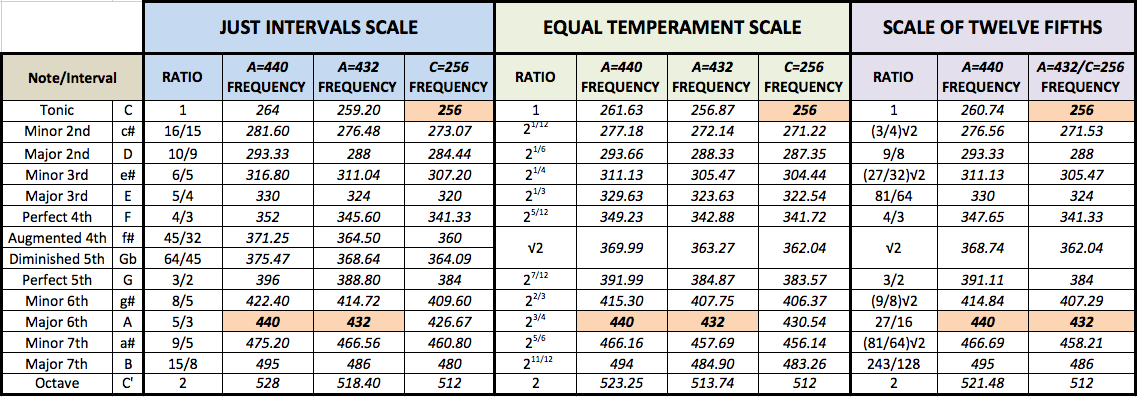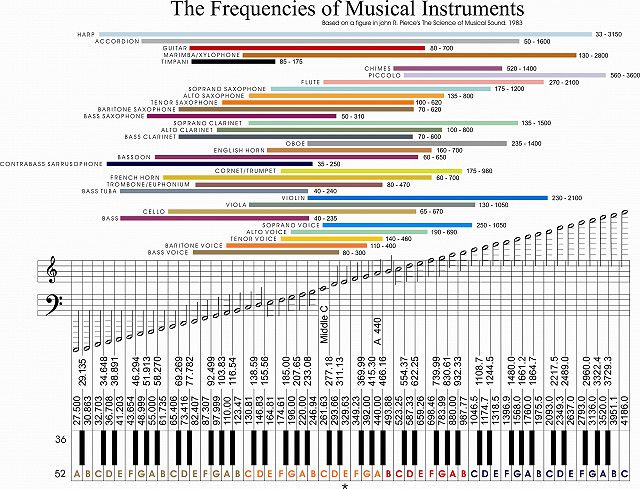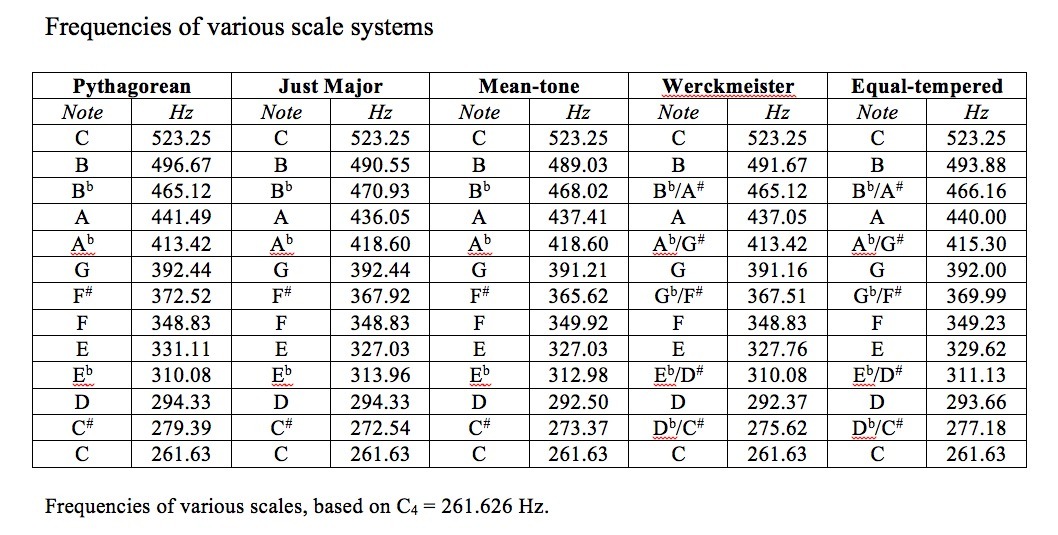AUDACITY — pitch shift
by amount -1.776%
AUDITION — pitch shift
by -0.31 semitones
See the paper MUSICAL CULT CONTROL by Dr Leonard Horowitz which details the weaponization of A440 tuning standard and its A432 alternative.
PDF — Musical_Cult_Control – A440 vs_A432 – Dr_Leonard_Horowitz
===
From https://crumplepop.com/a432-vs-a440-which-tuning-standard-is-better/
Before the standardization, each composer would tune their instruments and orchestras at different pitches. For instance, before becoming an advocate of 432 Hz, Italian composer Giuseppe Verdi would use A4 = 440 Hz, Mozart at 421.6 Hz, and Beethoven’s tuning fork resonated at 455.4 Hz.
In the 19th century, the world of Western music gradually started heading toward tuning standardization. Still, it wouldn’t be until the following century that the orchestra worldwide agreed on a unique reference pitch, thanks to the International Organization for Standardization.
Why Did 440 Hz Become The Tuning Standard?
Decades before the universal standardization of the 20th century, the French standard of 435 Hz became the most commonly used frequency. In 1855, Italy opted for A4 = 440 Hz, and the United States followed suit by the beginning of the 20th century.
In 1939, the International Organization for Standardization recognized 440 Hz as the standard concert pitch. This is how A4 = 440 Hz became the tuning standard of all instruments we use today, both analog and digital.
Today, most of the music you hear broadcasted on the radio or live at a concert hall use 440 Hz as a reference pitch. However, there are many exceptions, like the Boston Symphony Orchestra, which uses 441 Hz, and orchestras in Berlin and Moscow, which go up to 443 Hz, and 444 Hz.
So, is this the end of the story? Not at all.
What Is 432 Hz?
432 Hz is an alternative tuning system first suggested by French philosopher Joseph Sauveur in 1713 (more about him later). The Italian composer Giuseppe Verdi recommended this reference pitch as the standard for orchestras in the 19th century.
Although the worldwide music community agreed to use A4 = 440 Hz as the primary tuning reference, many musicians and audiophiles claim that music at A4 = 432 Hz sounds better, richer, and more relaxing.
Others believe that 432 Hz is more in line with the frequency of the universe and the Earth’s natural frequency pulsation. As described by the Schumann resonance, the fundamental frequency of Earth’s electromagnetic waves resonates at 7.83 Hz, so very close to 8, a number that supporters of 432 Hz like very much for its symbolic meaning.
Although the 432 Hz movement has been going on for quite some time, the last couple of decades saw its supporters fighting with renewed energy because of the supposedly healing powers this frequency has and the benefits it can provide to listeners.
===
To convert an audio file from A440 to A432 using Audacity, you can follow these steps:
1. **Open Audacity**: Launch the Audacity software on your computer.
2. **Import Audio File**: Import the audio file that you want to convert from A440 to A432. You can do this by going to `File` > `Import` > `Audio…` and selecting the file from your computer.
3. **Select the Entire Audio**: Click on the audio track to select it. You can do this by clicking on the area above the audio track, which will highlight the entire track.
4. **Change Pitch**: Once the audio track is selected, go to `Effect` > `Change Pitch…`. This will open a dialog box where you can adjust the pitch of the audio.
5. **Adjust Pitch**: In the Change Pitch dialog box, you can enter the desired semitones or frequency change. To convert from A440 to A432, you would typically need to decrease the pitch by approximately -32.6 cents or -0.32 semitones. You can enter this value in the “Percent Change” field or use the slider to adjust the pitch accordingly.
6. **Preview and Apply**: You can preview the changes by clicking on the “Preview” button. Once you are satisfied with the pitch adjustment, click on the “OK” button to apply the changes.
7. **Export Audio**: After applying the pitch adjustment, you can export the modified audio file by going to `File` > `Export` > `Export Audio…`. Choose the desired file format and save location, then click on the “Save” button to export the converted audio file.
By following these steps, you can convert an audio file from A440 to A432 using Audacity. Keep in mind that altering the pitch of an audio file may affect its sound quality, so it’s recommended to listen to the preview before exporting the modified file.





From a comment online: “What amazes me is the fullness of the sound at 432. …You [feel] the music in your chest- – you don’t just hear it with your head – and it’s got nothing to do with volume.”